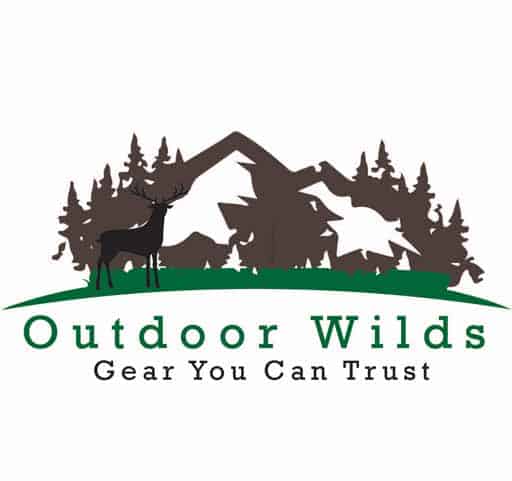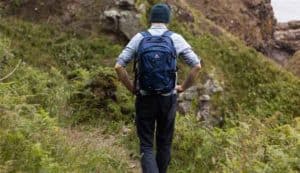

Editor & Article Writer for Outdoor Wilds
As an Amazon Associate I earn from qualifying purchases. Thank you for helping to support the site.
How to Filter Water in a Survival Situation
In this guide I take a close look at how to filter water in a survival situation. Always do your research before attempting to drink water from an unknown source.
The rule of 3’s states that you can last 3 weeks without food and only 3 days without water. That’s why taking care of a reliable source of treated water has to be one of the main priorities along with shelter and warmth in a survival situation.
There are 4 effective ways of filtering / treating drinking water in a survival situation. I’ll take a look at all 4 methods, plus their advantages and disadvantages.
The Importance of Purifying Water for Drinking
While hiking in backcountry or finding yourself in a survival situation you run the risk of becoming infected with pathogens if you drink untreated water from any natural water source.
There are many bacteria, viruses and parasites that live in untreated water. The 3 most common are.
- Giardia – Parasite
- Cryptosporidium – Parasite
- E-coli – Bacteria
Symptoms may take up to 72 hours to show and may consist of:
- Dehydration
- Watery stools
- Confusion
- Lack of appetite
- Flu like symptoms
Even the clearest running water from a stream or river may have become contaminated with feces or decaying matter upstream that you cannot see or detect by your senses alone.
That’s why it’s so important to treat water before drinking if possible. The CDC or Centers for Diseases Control and Prevention has more detail on the exact effectiveness of each of the 4 methods of water treatment.
How Can I Purify my Water Without a Filter?
If your stood in just your jeans, a t shirt and sneakers you could be in a bit of trouble if you suddenly find yourself having to survive out in backcountry.
In this situation drinking water from any running natural source is of course far better than not drinking at all.
However, most people do have some form of fire starting kit with them when heading out into the wilds along with all the necessary equipment to boil water.
How long should you boil river water?
Hard boiling simply means getting the temperature of the water to 100 degrees celsius with the water “rolling” around the container.
Boiling water is the best and safest way to ensure all pathogens are dead. Nothing will survive in water boiled to 100 degrees and I would always suggest boiling water even after using some of the other methods of water filtration.
The disadvantages to boiling water are:
- Takes longer at higher elevations
- Uses fuel and the water is hot
- Can’t do it while moving along a trail
Final thoughts – Boiling water method
So in summary, to guarantee your drinking water is safe to drink, boiled water is the only method providing pathogen free water.
The CDC recommend also that you boil water as an extra precaution.
Water Filtration for Survival
There are a number of considerations to make when choosing a water filter for use in a survival situation or when hiking in backcountry.
After you have read this article take a look at these water purification systems featured in my buying guide.
Water Filter for Survival Effectiveness
The holes that lets water pass through and therefore filtering out pathogens are measured in microns. A micron is one millionth of a meter. I would always recommend using a filter that has a micron rating of 0.01 microns.
The MSR Miniworks is probably the best water filter on the market for removing almost all pathogens and is rated by the NSF (The Public Health and Safety Organization) at 99.99%.
The MSR pumps at a rate of 1 litre a minute and you can attach a standard sized Nalgene water bottle to the pump. Its lightweight too at around 1 lb, so it makes an ideal choice for backcountry survival and hiking.
Preppers Water Filter Method
A makeshift water filter consists of 3 layers of filter media placed into a container. The most common types of filter media used are:
- Top layer – fine gravel
- Middle layer – sand
- Bottom layer – charcoal
An upturned plastic bottle makes an ideal container to house the filter layers.
- The gravel acts as a course filter removing large debris, including leaves, twigs, and general waterborne matter.
- Any smaller dissolved solids are removed by the fine sand layer
- Finally, the charcoal layer will remove pathogens and bacteria
This makeshift filter is not as effective as a manufactured filter. However if you use this method along with boiling the water after filtration then you have the best chance of drinking as safe water as possible.
Water purification using chemicals
The two most common chemicals used for water purification are chlorine and iodine. They come in tablet or crystal form. A word of caution when using iodine as a means of purifying drinking water. Do not use iodine when
- Pregnant
- Suffer from thyroid problems
- Are hyper sensitivity to iodine
Chemicals may not remove all parasites and they do tend to leave an unpleasant taste to the drinking water. On the plus side, they are the most lightweight to carry of all the methods of water purification.
Our bodies are able to neutralise chlorine once it enters our digestive system, so there are no adverse problems with drinking chlorinated water. The downside to chemical purification is that it takes up to 4 hours for the chemicals to have full effect.
Chemical purification is worth considering as a back up to your filtration pump if it was to fail during a long hike in backcountry.
Steripen for water purification
The steripen is a fairly new invention for sterilising water for purification. It uses ultraviolet light to kill bacteria and pathogens. The water has to be fairly clear to start with as it won’t remove larger solid matter from the water.
Sterpens are lightweight, but do need batteries to operate, so this is an additional consideration. They are however easy to use and very quick. One litre of water can be treated in around 90 seconds.
Always make sure the pen will fit into the neck of your water bottle as some of the pens can be quite wide in diameter.
Last update on 2025-04-30 / Affiliate links / Images from Amazon Product Advertising API
Final thoughts – Water Purification for Survival
To summarise, if in doubt boil your water as this is the only 100% guaranteed way of removing harmful bacteria.
The CDC recommend filtering your water first before boiling to remove any pesticides and harmful chemicals that may have entered the water course up stream.
If you found this article interesting, you may like my guide on how to identify different trees.
Popular Posts
Popular Posts
Last update on 2025-04-30 / Affiliate links / Images from Amazon Product Advertising API



















